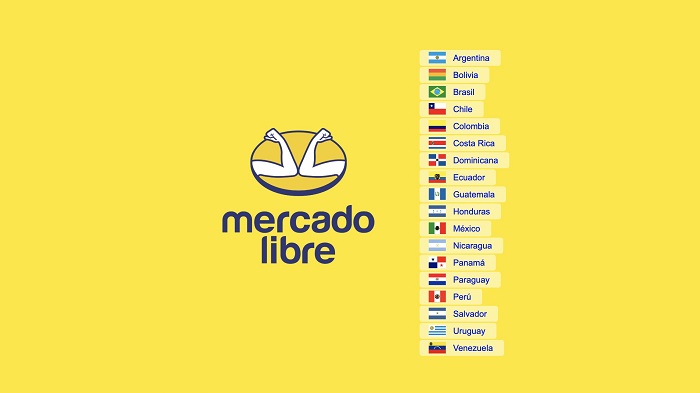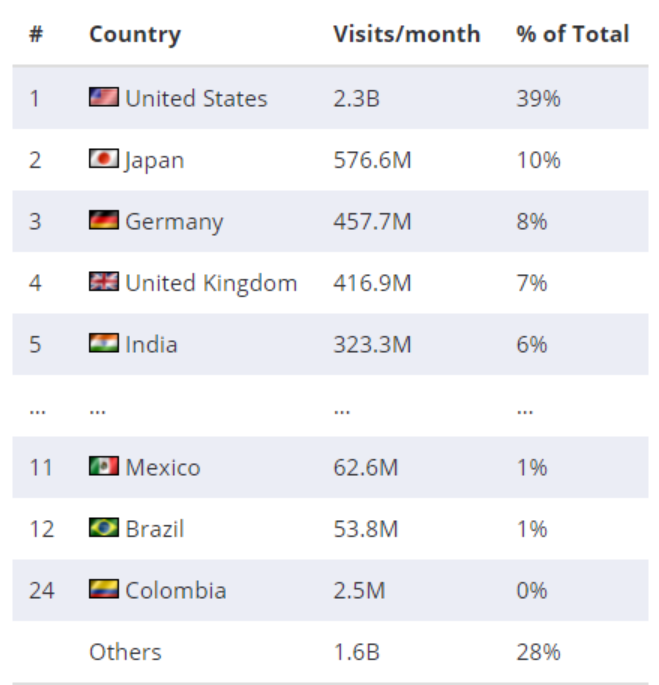Three years later, the number of online shoppers exceeded 350 million! Cross-border e-commerce in Latin America is still to be cultivated, so Chinese sellers should not miss it!
In the eyes of industry insiders, the e-commerce market in Latin America can be seen as the next Southeast Asia. Latin America has always been one of the most polarized regions in the world, but this has not affected the e-commerce market space in Latin America.

Data shows that the current online retail scale in Latin America can reach US$70 billion per year, accounting for 4.4% of the overall retail market, which shows that there is huge room for growth in the future. As infrastructure advances and network environment improves, the total number of people who access the Internet and start shopping online will also exceed 267 million, accounting for 45% of the total population in Latin America.
Latin America's largest e-commerce platform
Of course, this data is far from the most ideal data. It is predicted that the total number of online shopping in Latin America will exceed 350 million in 2024, which is also the reason why the e-commerce market in Latin America will be favored by the industry and sellers.
Currently, there are many platforms that occupy the e-commerce market in Latin America. Mercado Libre is ranked first, Americanas is second, Amazon is third, Casas Bahia is fourth, Submarino is fifth, Dafiti is sixth, Netshoes is seventh, Extra is eighth, Linio is ninth, Shoptime is tenth, Pontofrio is eleventh, Wish is twelfth, Privalia is thirteenth, Kanui is fourteenth, and Tricae is fifteenth.

Among them, Mercado Libre is the largest e-commerce platform in Latin America, with visitors reaching 642 million in one month. Among the 642 million visitors, Brazil is its largest source of traffic, accounting for 39%, while Argentina and Mexico are closely behind, with each accounting for 22% and 18%.
Mercado Libre was founded in Argentina in 1999. Today, Mercado Libre has 18 countries in Latin America and 642 million visitors per month. Until today, Mercado Libre does not have a self-operated brand, but it has not stopped building its own business ecosystem. So far, it has launched four services: online payment, paid promotion, independent e-commerce platform, and logistics.
Currently, Mercado Libre has established offices in seven countries: Argentina, Brazil, Mexico, Venezuela, Chile, Colombia and Uruguay, with more than 11,000 employees and listed on the Nasdaq Stock Exchange in 2007.
The situation of Amazon in Latin America
In China, Amazon is the mainstream cross-border e-commerce platform, but in Latin America, Amazon is the third largest e-commerce platform. Mexico and Brazil also contributed only 63 million/month and 54 million/month traffic to Amazon, accounting for only 2% of Amazon's global traffic, which is a big gap with the traffic data contributed by the United States and the European Union to Amazon.

In 2015, Amazon opened a site in Mexico and in 2017, it opened a site in Brazil. But before that, Amazon was already active in Mexico and Brazil, but it was selling electronic products. Some media said that the Mexican and Brazil sites are no different from other Amazon sites around the world. Amazon has also invested a lot of financial and material resources to build supporting logistics facilities, such as FBA and Prime members.
It is understood that the Mexican site belongs to the Amazon North American joint account. Sellers who register US sites and Canadian sites can directly access the Mexican site with their existing accounts. However, in terms of logistics, sellers can choose FedEx, DHL, multinational logistics companies, and Amazon FBA, but they only need to have a local business place in Mexico for customs clearance. Brazilian sites are different. Registration is only open to local sellers in Brazil. International sellers who want to settle in need of a local Brazilian agent.
Other e-commerce platforms in Latin America
After talking about Mercado Libre, the largest e-commerce platform in Latin America, we will take a look at some of the remaining e-commerce platforms, which also play an indispensable role in the e-commerce market in Latin America.
Americanas, Submarino, and Shoptime are the three e-commerce platforms under Brazil's B2W Group. Americanas and Submarino were both founded in 1999, acquired Shoptime in 2005, and merged into B2W Group in 2006.
Among these three e-commerce platforms, Americanas has the largest traffic, with 134 million visitors per month, while Submarino and Shoptime have a slightly weaker traffic, roughly 33 million/month and 14 million/month. Americanas has a complete range, as well as corporate group buying; Submarino is aimed at young audiences and specializes in high-tech products, fashion and sports products; while Shoptime mainly sells home products, beauty and personal care products.
Casas Bahia, Extra, and Pontofrio belong to Via Varejo. Via Varejo is Brazil's second largest e-commerce platform, with many similarities to B2W Group. It also has more than 1,000 physical stores across Brazil.
These three e-commerce platforms are mainly focused on electronic products and home appliances, with the number of visitors to each platform being 36 million/month, 17 million/month and 14 million/month respectively. The omni-channel GMV in 2019 was US$288 million, accounting for 26.7% of the group's online sales.
Dafiti, Kanui, and Tricae belong to Singapore's GFG. Dafiti mainly sells clothing, sports goods and home products, with 30.4 million visitors per month, Brazil accounts for 57%, Argentina accounts for 17%, Colombia accounts for 17%, and Chile accounts for 9%.
Kanui mainly deals in sports and outdoor products, while Tricae mainly deals in children's clothing. But the difference is that Kanui and Tricae are only targeted at consumers from Brazil, with not too many visitors, with 2.5 million per month.

Netshoes mainly sells sports shoes, clothing and equipment, with a visitor volume of 22.5 million per month, and was acquired by Magazine Luiza in 2019. Currently, Netshoes only faces sellers whose registered location is in Brazil.
Linio has 15 million visitors per month, with Colombia, Chile, Mexico, Peru and Argentina being its traffic sources. Because its official language is Spanish, Brazil is not yet involved.
Wish在全球是以“快时尚”和低成本著称的电商平台,大部分产品从中国发货。其平台卖家遍布全球,每个月大致有1000万的流量,都是来自巴西。
Privalia, from France, mainly sells fashionable fast-moving consumer goods, with 6 million traffic per month. The people in southern Europe and Latin America are its main sources of traffic, of which 32% come from Italy, 28% come from Brazil, 27% come from Spain, and 12% come from Mexico.






![#Laogao E-commerce Newsletter# [E-commerce Morning News on March 20]](/update/1679275506l136868010.jpg)

![#Laogao E-commerce Newsletter# [E-commerce Evening News on April 28]](/update/1682673568l588920428.jpg)

 EN
EN CN
CN
